
Gold Parlophone Label
(Update: 1st. February 2016)
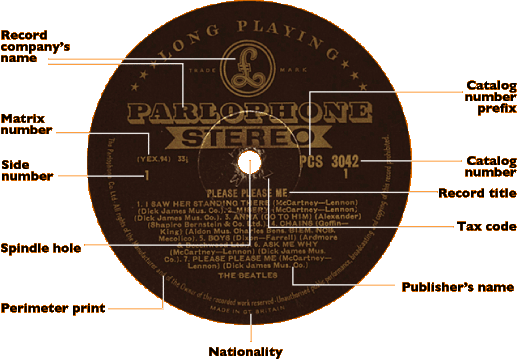 |
Example:LP's List
| TITLE | PLEASE PLEASE ME | ||||
| CATALOG NUMBER | PCS 3042 | ||||
| RELEASE DATE | 26th April.1963/First Press | ||||
| TRACK LISTING | SIDE 1 | SIDE 2 | |||
| I Saw Her Standing There (*) | Love
Me
Do (sim.stereo) |
||||
| Misery (*) | P.S.
I
Love You |
||||
| Anna
(Go
To Him) |
Baby It's You | ||||
| Chains | Do
You Want To Know A Secret (*) |
||||
| Boys | A Taste Of Honey | ||||
| Ask
Me Why |
There's A Place (*) | ||||
| Please Please Me | Twist And Shout | ||||
| FRONT | BACK | SIDE 1 | SIDE 2 | DISK | |
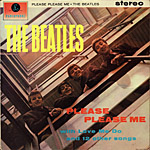 |
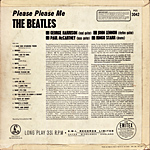 |
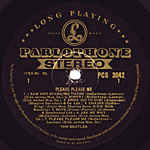 |
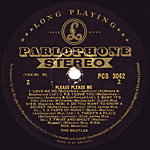 |
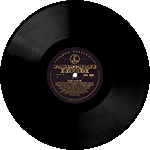 |
|
| INNER SLEEVE | FRONT COVER CLOSE UP | BACK COVER CLOSE UP | |||
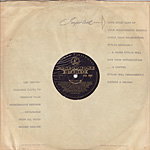 |
 |
 |
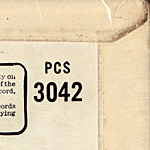 |
Wrap-around
cover.
Catalog No. "PCS 3042" was printed on upper right corner of the back cover. |
|
| The word "stereo" is large type. | "Photo: Angus McBean" credit was printed at the extreme right corner. | ||||
| BACK COVER CLOSE UP | LABEL CLOSE UP | ||||
 |
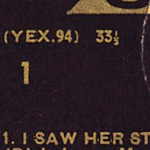 |
The statement "RECORDING FIRST PUBLISHED 1963" was not yet added. "33 1/3" was still remained. | |||
| Sleeves for Parlophone did two Londonfs of printing house: Ernest J. Day & Co Ltd. and Garrod & Lofthouse Ltd. The first and second issue of "Please Please Me" has a sleeve made by Ernest J. Day & Co Ltd only. | |||||
| LABEL CLOSE UP | |||||
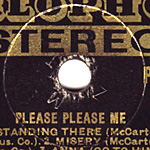 |
In
the center of the LP have letters embossed (M, Z and T). The letters are tax code. |
 |
 |
 |
|
| "The Parlohone Co Ltd. (small letter)" was printed at the perimeter. | SIDE 1 | SIDE 2 | |||
| Matrix
No. is Side-1: YEX 94-1 Side-2: YEX 95-1 |
|||||
| LABEL CLOSE UP | |||||
| SIDE 1 | SIDE 2 | Black & Gold label, with gDick James Muds Co.h uncorrect publishing credit for gI Saw Her Standing Thereh, gMiseryh, gDo You Want To Know A Secreth & gTherefs A Placeh. | |||
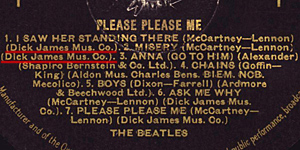 |
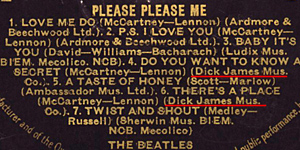 |
||||
|
OTHER
ITEM
|
|||||
| - | |||||
| LABEL | Gold Parlophone Type-1 | ||||
| MIX | STEREO (except as noted) | ||||
| MATRIX No. | SIDE 1 | YEX 94-1 | |||
| SIDE 2 | YEX 95-1 | ||||
| VINYL COLOR | BLACK | ||||
| RECORD COMPANY'S NAME | The Parlophone Co. Ltd. (small letter) | ||||
| CENTRAL
REMARK "SOLD IN U.K..." |
- | ||||
| RECORDING PUBLISHED CREDIT | - | ||||
| COVER FORM | Single type. Wrap-around cover | ||||
| PRINTER CREDIT | Printed and Made by Ernest J. Day & Co. Ltd. London | ||||
| COVER DESIGN/ PHOTO/ NOTES | Photo: Angus McBean / Notes: Tony Barrow | ||||
| INNER SLEEVE | Polythene-lined "Use Emitex" die-cut type. | ||||
| PRODUCER | George Martin | ||||
|
COMMENTS
|
Black Parlophone label with
gold ink and "LONG PLAYING" curved across the top. At the center of the label, the word "STEREO" on gold ribbon was printed. The word "stereo", on upper right of the front cover, is large. There is the words in the box --"IMPORTANT This record is intended for use only on special stereophonic reproducers. ..."-- on upper right of the back cover. On 8th March, when George Martin typed up the running order sheet for "PLEASE PLEASE ME", he mistakenly credited 4 songs(*) as being published by the Dick James Mus Co." This is the list that went to the printers, from which the first incorrect batch of labels was made, for both the mono and stereo pressings. The Second pressing, the publishing credit had changed to "Northern Songs". It is not known as it has been much made copies of the first stereo press, but all copies have only two variants of codes of a stamp: 1G/1R or 1R/1G. Therefore the total of copies of the first stereo press could not be more than 600. Sleeves for Parlophone did two Londonfs of printing house: Ernest J. Day & Co Ltd. and Garrod & Lofthouse Ltd. The first issue of "Please Please Me" has a sleeve made by Ernest J. Day & Co Ltd only. This stereo versions of "Love Me Do" have been created from the mono versions, because original master tapes are lost. The cover photo was taken at EMI's former headquarters at Manchester Sq. by Angus McBean on 5th March 1963. |
||||
Catalog Number...Back to the LP List
| EMI started to release LPs in 1952 and the first LP in the PMC
series was PMC 1001, probably released in 1955. LPs were released
in both 10 inch and 12 inch format until 1960, but after that all
LPs were in the 12 inch format. In 1960 Parlophone also started to release stereo LPs. They were released in a separate record number series, the PCS 3000 series. The first release in this series was PCS 3001. The mono and stereo releases were issued in separate catalog number series until early 1966. In 1966, the catalog number series was restarted at 7001 with mono and stereo releases now having the same catalog numbers. Only the catalog number prefixes - still PMC for mono and PCS for stereo - were different, to denote the format. It took about six years before stereo LPs became more common than mono LPs. Before 1966, the stereo LPs were less common than the mono versions and after 1966 mono was more rare than stereo. Parlophone ceased to release mono LPs in late 1969. Before the spring of 1963, the stereo label had the same basic black/gold design as the mono label, although with a stereo banner printed below the Parlophone logo. |
| Mono Label | Stereo Label |
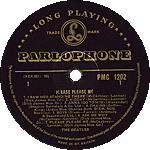 |
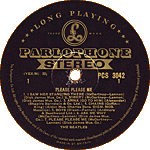 |
Prefix of Catalog Number
| Gold Parlophone label | ||
| Mono | Stereo | Comments |
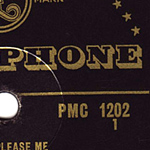 |
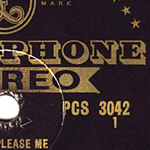 |
The mono LPs were numbered with "PMC"
prefix on center-right of the label, in the same way, the stereo
LPs were numbered with "PCS"
prefix. And the stereo LPs, the word "STEREO" on gold banner was printed below the Parlophone logo. |
| From 1963 - today, regular Beatles' Parlophone and Apple LPs are
issued with catalog numbers--"PMC-XXXX" or "PCS-XXXX",
where XXXX is a 4-digit number, excepted the "Let It Be Box Type"
was numbered "PXS 1". The first export LPs are reproduced of three American LPs. They are "Something New (CPCS 101)", "The Beatles' Second Album (CPCS 103)" and "Beatles VI (CPCS 104)". All of these are available only in stereo. This whole series of albums had fully-laminated front covers with fold over flaps onto the back, as most of the standard-issue 60's LP covers were made. |
| Prefix | Label | Kind |
| PMC | Parlophone, Apple | Mono |
| PCS | Parlophone, Apple | Stereo |
| PXS | Apple | Stereo (Let It Be: Box Type) |
| CPCS P-CPCS |
Parlophone, Apple | Stereo: for export Edition |
| P-PCS (PPCS) |
Parlophone, Odeon | Stereo: for export Edition |
| PCSP | Parlophone, Apple | Compilation Album |
| PCTC | Parlophone | Magical Mystery Tour |
| PHO | Parlophone | Picture Record |
Mixing: Mono and Stereo...Back to the LP List
| Nine original Beatles' LPs were issued on the Parlophone label
between 1963 and 1967 which were issued in both mono and stereo. Four original Beatles' LPs were issued on the Apple label. Since in early 1969, new LPs began being pressed only in stereo, only the first two Beatles' LPs on Apple ("The Beatles" and "Yellow Submarine") were issued in both mono and stereo, even though "Yellow Submarine" itself was not mixed separately for mono as "The Beatles" and the previous LPs were; the mono "Yellow Submarine", unfortunately, was simply a combining of the two stereo channels. |
| Original Parlophone Label | |||
| RELEASE DATE | TITLE | MONO | STEREO |
| March 1963 | Please Please Me | Yes | Yes |
| November 1963 | With the Beatles | Yes | Yes |
| August 1964 | A Hard Day's Night | Yes | Yes |
| December 1964 | Beatles For Sale | Yes | Yes |
| August 1965 | Help! | Yes | Yes |
| December 1965 | Rubber Soul | Yes | Yes |
| August 1966 | Revolver | Yes | Yes |
| December 1966 | A Collection of Beatles Oldies | Yes | Yes |
| June 1967 | Sgt. Peppers Lonely Hearts Club Band | Yes | Yes |
| Original Apple Label | |||
| RELEASE DATE | TITLE | MONO | STEREO |
| November 1968 | The Beatles | Yes | Yes |
| January 1969 | Yellow Submarine | (Yes) | Yes |
| September 1969 | Abbey Road | No | Yes |
| May 1970 | Let It Be | No | Yes |
Label Variation...Back to the LP List
| Record company's Name | Publishing date of the recording | Central
Remark "Sold in U.K...." |
Music Publisher's Name |
| The Parlophone Co. Ltd. | No Credit | No | "Dick James Mus.Co." |
| "Northern Songs Ltd." |
Perimeter print: Record Company's Name
| The outer rim statement on the label, which always said "The
Parlophone Co. Ltd. (small letter)" On 1st July 1965, EMI underwent a merger and each individual ceased to be a L.T.D. company and became a subsudialy of "The Gramophone Co. Ltd." which was owned by EMI. This merger meant yet another label change occurred and previous "Parlophone Co. Ltd." rims where replaced with the new "Gramophone" rims. |
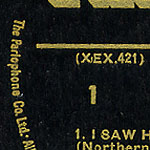 |
Publishing date of the recording
| Black/gold
Parlophone label March 1963-April 1963 |
cf.
Black/yellow
Parlophone label Summer 1963-Early 1965? |
cf. Black/yellow
Parlophone label Early 1965?- Late 1969 and 1981 |
 |
 |
 |
| The statement "RECORDING FIRST PUBLISHED 1963" was not yet added. | The statement "RECORDING FIRST PUBLISHED 196X" was added. | The statement "RECORDING FIRST PUBLISHED 196X" was replaced by a symbol "(P)". |
"SOLD IN UK." statement
| The "SOLD IN U.K. SUBJECT TO RESALE PRICE
CONDITIONS, SEE PRICE LISTS" statement was introduced in February
1964 on all EMI singles, EPs and LPs. So, there is No "gold Parlophone" label which was printed the central remark "Sold in U.K..." on the label. |
cf. Yellow Parlophone Label with central remark.
| Black/yellow Parlophone label : February 1964-Early 1965? |
 |
Music Publisher's Name
| "Dick James Mus.Co." version | |||
| Mono | Stereo | ||
| SIDE 1 --> Click! | SIDE 2 --> Click! | SIDE 1 --> Click! | SIDE 2 --> Click! |
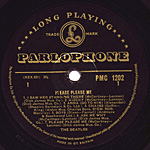 |
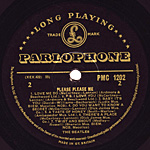 |
 |
 |
| "Northern Songs Ltd." version | |||
| SIDE 1 --> Click! | SIDE 2 --> Click! | SIDE 1 --> Click! | SIDE 2 --> Click! |
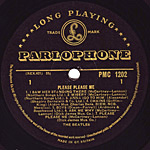 |
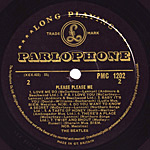 |
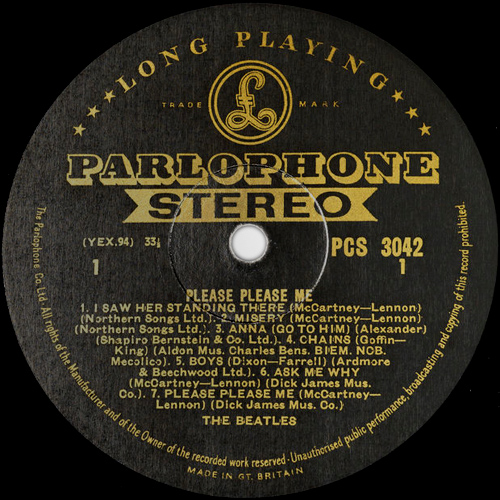 |
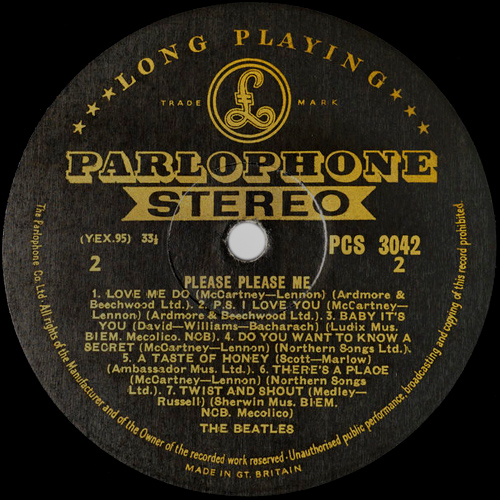 |
| "Dick James Mus.Co." version | |
| SIDE 1 | SIDE 2 |
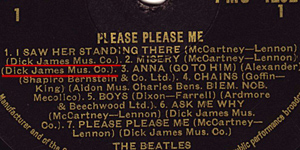 |
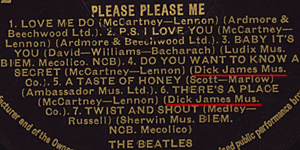 |
| "Northern Songs Ltd." version | |
| SIDE 1 | SIDE 2 |
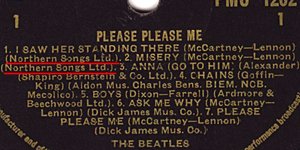 |
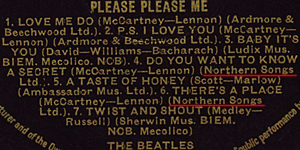 |
| On 8th March, when George Martin typed up the
running order sheet for "PLEASE PLEASE ME", he mistakenly credited
4 songs(*) as being published by the Dick James Co. This is the list that went to the printers, from which the first incorrect batch of labels was made, for both the mono and stereo pressings. |
|
|
|
Northern Songs Ltd. is a company founded on 22th. February1963 by music publisher Dick James, Brian Epstein, and The Beatles to publish songs written by John Lennon and Paul McCartney |
|
Copyright Information
| The record companies printed copyright information on records
that were intended for export and on a lot of domestic U.K.
pressings. In case of EPs and Singles, this information was
usually printed in a "box" somewhere on the label. |
The most usual ones are:
|
Embossed Initials: Tax code
| Several of the record companies printed or
pressed tax codes on the records during the 60's. The tax code was
pressed in the run-off groove area and sometimes embossed in the
center of the label or printed on the label. The purchase tax was introduced during World War II and was a sort of "luxury tax". As the tax percentage fluctuated, the tax code changed. Right: the center of "PLEASE PLEASE ME", with initials "MZT" very visible. The ones are KT, MT, PMT, PT, MKT or PKT and maybe a couple more; KT and MT seen most frequent. |
 |
| According
to "LABELOGRAPHY written by Jan Petterson", there were 17
different tax codes until VAT was introduced in 1973. The record companies introduced the new tax codes at specific dates but sometimes continued to use an old code even when they had introduced the new one. (Similar information was received from Mr. Andy.Thanks!) |
|
| Tax codes | |||
| NT | 1954 | OT | 26th. July 1961 |
| NI | 1955 | ZT | 10th. April 1962 |
| RT | Summer 1955 | PT | 26th. November 1962 |
| XT | Summer 1957 | MT | 1st. January 1963 |
| ET | August 1959 | KT | 1st. July 1963 (used until at least 1972) |
| WT | 1st. August 1960 | JT | 1968 |
| Matrix Number...Back to the LP List |
| Matrix numbers are alphanumeric codes (and on occasion, other symbols) stamped or hand written (or a combination of the two) into the run-out groove area of a gramophone record. This is the non-grooved area between the end of the final song on a record's side and the label, also known as the run-off groove area, end-groove area, matrix area, or "dead wax". |
| Matrix numbers are intended for the internal use of the record manufacturing plant, but they are also studied and documented by record collectors, as they can sometimes provide useful information about the edition of the record. |
| The most important part of the extra information is usually the cut number, which is a suffix to the main number. For example, matrix number 12345 is seen on a label, but examination of the run-out groove area reveals number 12345–3, which indicates this is the third cut of this side. It is not unusual to find records with a different cut number on each side. |
Prefix of Matrix Number
| Mono (PMC) label using: XEX. ( you
can see each label and inner groove both side 1 and 2) Stereo (PCs, P-PCS) label using: YEX. ( You can see each label and inner groove both side 1 and 2) |
| Prefix of matrix number | |
| Mono: PMC Series | Stereo: PCS Series |
 |
 |
| using: XEX | using: YEX |
| ex.) Please Please Me (PCS 3042/stereo) | |
| SIDE 1 | SIDE 2 |
 |
 |
| Matrix No. is Side-1: YEX 94-1 / Side-2: YEX 95-1 |
|
Lacquer, Mother and Stamper NumberThe courtesy of Mr. Michael Fremer (Thanks!) |
||||||||||||||||||||||
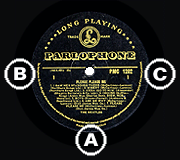 |
At the "6 O'clock" position on the inner groove area is
the matrix number
with a -1 or -2 etc. For instance, Beatles For Sale in stereo is YEX 142-1 (etc.). The "1" means the FIRST LACQUER cut from the master. -2 the second etc. |
|||||||||||||||||||||
| At the "9 O'clock" is a number which tell you what "mother" was used to generate the stamper actually used the press the record. A number of "mothers" are generated from the lacquer. Obviously a "1" means first mother generated from the lacquer. A "5" means it was much later--the fifth mother generated from the lacquer. | ||||||||||||||||||||||
| At the "3 O'clock" position there will be one to three letters,
which are codes associated with numbers as follows, which tell you
what stamper was used to press the actual record: G R A M O P H L T D (gramophone Ltd) |
||||||||||||||||||||||
|
||||||||||||||||||||||
| YEX 142-1, mother 1, stamper G is the very first pressing of "Beatles For Sale" in stereo: first lacquer, first mother, first stamper. YEX 142-1, mother 4, stamper RLT. That would be first lacquer, 4th mother and 289th stamper generated from that mother. |
||||||||||||||||||||||
| According to "Beatle
Bay UK", The infamous 1st Press Gold STEREO Parlophone Label. Released almost as an after thought 6 weeks after the original release date, & possibly waiting for the first of the pressing machines pressing the mono to free up. The very first run of this stereo pressing had this gold printed label, and considered by most as the ultimate (& Expensive) Beatle collectable as fewer than 2000 were ever pressed, and less than half have ever turned up.. Collectors are well aware of the stamper codes which can be found on the run offs on the vinyl. The first Gold Stampers are 1G/1R(side 1/side 2), 1R/1G and 1A/1R. The 1G/1R is from pressing machine 1, 1R/1G (machine 2), and 1A /1R(machine 1) the rarest of the 3 by far, as was pressed after the Northern Songs edition below. Considering only 2 or 3 copies have ever surfaced, possibly the Hayes pressing plant just used the labels that were lying around. 2nd Press Gold Parlophone Label. The publishing Credits for "I Saw Her Standing There, Misery, Do you want to know a secret, and There's a Place" are now credited to "Northern Songs Ltd", the brand new company formed to deal with the Lennon-McCartney writing partnership. These "Northern Songs" Gold records are a lot rarer than the Dick James label by almost 5 to 1 as they almost immediately changed to the Yellow & Black 3rd Press below. Seen with 1G/1R and 1R/1G mother stampers only as so far, no 1A/R presses have come to light.. |
Cf. How Vinyl Records Are Made
RCA Victor presents Sound and the Story (1956) / Copyright Radio Corporation of America
Vinyl Color...Back to the LP List
Black Only.
| Mono | Stereo |
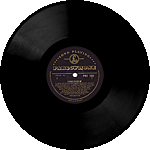 |
 |

